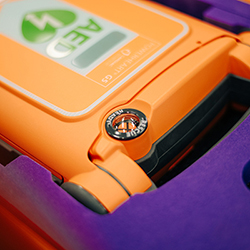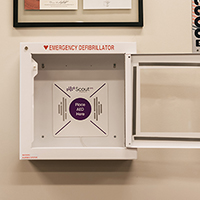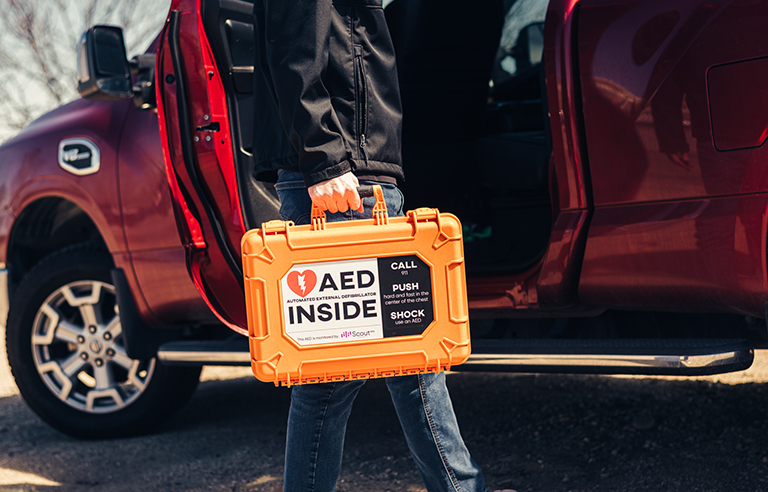Cleaning Up the ‘Defunct AED Mess’

Remote monitoring is the future
If you’re a parent or have had roommates, you know a thing or two about cleaning up messes. For every good mess, you need the right tool to clean it up. You can scrub the wall all you want to get rid of those pen marks, but unless you’re willing to repaint, you better just use a foam eraser and be done with it.
Remote monitoring cleans up the “defunct AED mess” by monitoring AEDs at scale by removing many of the process and people challenges that come from manual inspections. The best solutions to complex problems focus people and technology on their highest and best uses. AED remote monitoring technology, such as ScoutRMS from RescueStat, allows technology to do what it does best: mundane repetitive tasks that require precision.
Too many AEDs aren’t ready to save a life
It’s exciting to be a part of an industry that’s focused on saving people’s lives. Unfortunately, there are too many defunct AEDs that won’t shock when needed most. Although it’s difficult to ascertain the exact number of AEDs in the United States, the number of AEDs distributed over the past few decades ranges from 3 million to 4.5 million. A large percentage of AEDs aren’t ready to deliver a shock – estimates upwards of 20%. Doing the math means that there could be more than 500,000 AEDs that aren’t ready to save a life when sudden cardiac arrest strikes. This is abhorrent, and we’ll refer to this as the “defunct AED mess.”
AEDs aren’t ready because it’s hard to manually track and monitor them at scale
 AEDs need ongoing monitoring and maintenance. In addition to other issues, AED batteries die and adhesive pads dry out. Manufacturers and best-practice program management recommend ongoing inspections, ideally monthly. However, because people are imperfect and processes atrophy over time, many AEDs are misplaced or aren’t inspected on a regular basis.
AEDs need ongoing monitoring and maintenance. In addition to other issues, AED batteries die and adhesive pads dry out. Manufacturers and best-practice program management recommend ongoing inspections, ideally monthly. However, because people are imperfect and processes atrophy over time, many AEDs are misplaced or aren’t inspected on a regular basis.
Because components expire and it’s hard to manually track and monitor multiple AEDs, especially those that travel to and from jobsites, it’s no wonder why so many AEDs are defunct.
Cost savings and stability
Manual inspections of AEDs are expensive because they rely on physical outputs that don’t scale. The greater number of AEDs, the higher the costs as more people walk and drive around to inspect devices. There are three types of costs to consider when manually inspecting AEDs:
- Variable
- Fixed
- Opportunity
Variable costs increase with each additional unit. This is typically the labor and transportation associated with walking and driving around. Fixed costs increase as you reach capacity thresholds. One person can only inspect so many devices. Eventually, another person and vehicle must be added. Opportunity costs are related to the work that isn’t performed that could otherwise be if resources were freed up.
 Fortunately, remote monitoring with ScoutRMS is a low-cost and predictable way to scale AED monitoring. People and technology are both essential to ensure the best outcomes. You should never remove people from AED program management, but remote monitoring leverages human effort to focus on highest and best use tasks. Remote monitoring acts as a tool to help you do more with the same number of inputs. Never lose sight of the end goal of your program: to save lives and protect your organization from sudden cardiac arrest.
Fortunately, remote monitoring with ScoutRMS is a low-cost and predictable way to scale AED monitoring. People and technology are both essential to ensure the best outcomes. You should never remove people from AED program management, but remote monitoring leverages human effort to focus on highest and best use tasks. Remote monitoring acts as a tool to help you do more with the same number of inputs. Never lose sight of the end goal of your program: to save lives and protect your organization from sudden cardiac arrest.
Most AEDs will be monitored in the future
Forward-thinking companies are starting to wake up to the fact that managing AEDs is hard and expensive. This has led to the “defunct AED mess” the industry has on its hands, with hundreds of thousands of AEDs that are blinking red or completely dead – an ominous foreshadowing of events if those devices are ever needed to deliver a shock. The risk of lost lives and legal exposure demands a new approach. Remote monitoring is a disruptive technology and the right tool to clean up this “defunct AED mess” and why the majority of AEDs will be monitored in the future.
Click here to learn more about our patented, industry-leading remote monitoring solution, ScoutRMS.
Post a comment to this article
Safety+Health welcomes comments that promote respectful dialogue. Please stay on topic. Comments that contain personal attacks, profanity or abusive language – or those aggressively promoting products or services – will be removed. We reserve the right to determine which comments violate our comment policy. (Anonymous comments are welcome; merely skip the “name” field in the comment box. An email address is required but will not be included with your comment.)


